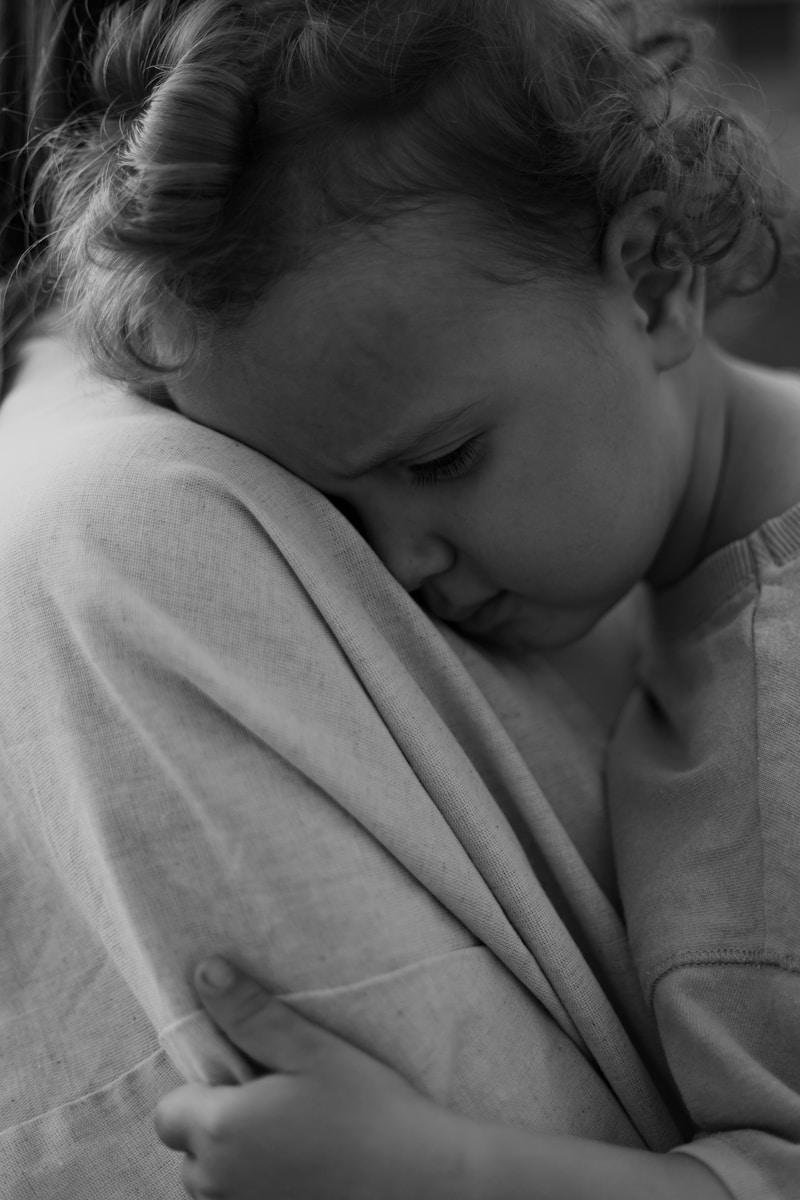Grief from Child Estrangement: Mourning the Living
Hi, I’m Brian Briscoe.
If you’re here, it’s probably not because you lost a child in the traditional sense. Your child is still out there somewhere—in the world, in your memories, in your heart. And yet, you feel the heavy, aching presence of grief every single day.
You might wonder, “Is this grief? Can I really grieve someone who’s still alive?”
The answer is yes.
The grief of child estrangement is real, valid, and often invisible to the people around you.
Let’s talk about that grief. Let’s name it. Understand it. And figure out how to carry it with compassion—so it doesn’t carry you.
What Makes This Grief So Complicated
When people think of grief, they often imagine funerals, obituaries, and meals dropped off by well-meaning neighbors. Society knows how to support people when someone dies. But estrangement is grief without a funeral.
There’s no clear marker, no ceremony, no shared language. You didn’t “lose” your child in the traditional sense—but the connection, the contact, the intimacy? It’s gone. And that’s a loss as profound as death.
What makes this even harder?
- The loss is ambiguous. Your child is alive, but they’re absent. You may not know where they are, how they are, or if they’ll ever speak to you again.
- There’s no closure. There’s often no final conversation or clear ending. The silence itself becomes a kind of trauma.
- You feel invisible. Few people recognize this kind of grief, and even fewer know how to support you in it.
- You may be blamed. Society often assumes estrangement means you did something wrong—adding shame on top of sorrow.
This kind of grief is a long, quiet heartbreak. It doesn’t come in tidy stages. It loops and circles and doubles back on itself.
You’re Not “Crazy” for Feeling This Way
Estranged parents often ask me:
“Is it normal to feel like I’m grieving someone who’s still alive?”
Absolutely. This experience has a name: ambiguous loss.
Coined by family therapist Pauline Boss, ambiguous loss happens when there’s no clear resolution. Your loved one is physically absent but psychologically present. Or vice versa.
You don’t know how to move on because a part of you is still waiting. Waiting for a call. A message. A holiday reunion. A sliver of hope.
This isn’t unhealthy or delusional. It’s a normal reaction to a deeply abnormal situation.
What Grief Looks Like in Estranged Parents
Grief doesn’t always look like sobbing. Sometimes it looks like numbness. Sometimes it looks like snapping at a spouse or forgetting your own birthday. Sometimes it looks like exhaustion that sleep doesn’t fix.
Here are just a few common symptoms estranged parents describe:
- Sudden tears during daily tasks
- Obsessive thoughts about what went wrong
- Withdrawing from friends or family
- Rage or resentment toward others who have close relationships with their kids
- Feeling “stuck” in time
- Guilt that keeps replaying old conversations
- Fear of being judged or abandoned by others
- Deep loneliness, even in a crowded room
These reactions are part of the grief process. They’re not proof that you’re failing—they’re proof that you’re human.
The Problem with “Getting Over It”
In traditional grief, there’s a cultural expectation to “move on.” But when it comes to child estrangement, that pressure is even worse—and more harmful.
Let me be clear: you don’t have to “get over” your child.
You don’t have to stop loving them to heal.
You don’t have to shut down your emotions to survive.
Healing from grief isn’t about erasing it. It’s about learning how to live alongside it—to create a life where your grief doesn’t control you, even if it’s still present.
This is where therapy, support groups, and community can be game changers.
How PLACE Helps Parents Process This Grief
PLACE—Parents Living After Child Estrangement—exists because grieving estranged parents deserve a place to be seen.
Here’s how we support you through this very real and very complicated loss:
1. Peer Support Groups
Three times a week, parents gather in a confidential, judgment-free space. You don’t have to explain the basics—we already get it. Here, your grief is acknowledged, not minimized.
You’ll hear from others who’ve been there. You’ll share your story, or sit quietly and just listen. Either way, you’ll know: you’re not alone.
2. Grief-Informed Counseling
As a therapist, I work with parents one-on-one to help them make sense of their pain. You’ll never hear me say “just get over it.” We’ll unpack the grief at your pace. We’ll explore guilt, regret, and hope. We’ll find meaning again.
If your grief has spiraled into depression or anxiety, you’ll get tools to manage that, too.
3. Coaching for the Road Ahead
When you’re ready, we’ll shift from grief to growth. What does life look like now? How do you hold space for your sadness while reclaiming your joy?
Coaching helps you rediscover your identity, set new boundaries, and write your next chapter—even if reconciliation never comes.
The Milestones That Can Trigger Grief Again
One of the most painful parts of estrangement grief is how it sneaks up on you.
Even if you’ve been feeling stronger, certain moments can reignite the pain:
- Holidays – The empty chair at the table feels louder than anything.
- Birthdays – The day they were born can be unbearably bittersweet.
- Mother’s/Father’s Day – A gut-punch of silence where there used to be cards or calls.
- Weddings, graduations, or the birth of grandchildren – Milestones you always imagined sharing with your child.
These are not just “hard days.” They’re grief landmines. And it’s okay if they hit you hard. It’s also okay to plan for them, to build rituals around them, or even to skip them entirely if that’s what you need.
How to Support Yourself in the Grief Process
You may not have control over your child’s choices, but you do have control over how you care for your own heart. Here are a few ways to begin:
1. Name the Loss
Write it out. Speak it out loud. Tell someone safe, “I’m grieving my child, even though they’re alive.” Naming it gives it shape—and helps loosen the shame.
2. Let Yourself Feel
Don’t rush to “fix” it. Don’t force positivity. Let your grief breathe. Cry if you need to. Yell if you need to. Journal. Paint. Walk. Feel.
3. Set Boundaries with Others
Not everyone will understand your grief. Some may say things that hurt. Protect your heart. You’re not obligated to explain yourself to people who minimize your pain.
4. Create Meaningful Rituals
Light a candle. Write an annual letter you don’t send. Plant something. Start a new tradition in your child’s absence. Rituals help you hold space for grief in ways that feel empowering.
5. Remember Who You Are Beyond the Pain
You are more than an estranged parent. You are still capable of love, purpose, laughter, connection, and growth. Grief does not have the final word.
A Final Word from Me to You
Child estrangement grief is one of the deepest pains I’ve ever encountered—in my clients and in my own story.
But I want you to know this:
Your love still matters. Your story still matters. And you are allowed to grieve what could have been, even as you build what can be.
You may not get the reconciliation you long for.
But you can find peace. You can find community. You can live with open hands instead of clenched fists.
PLACE is here to walk beside you in that. No shame. No labels. Just support, healing, and a path forward—grief and all.
You’re not alone. Not anymore.
—Brian








